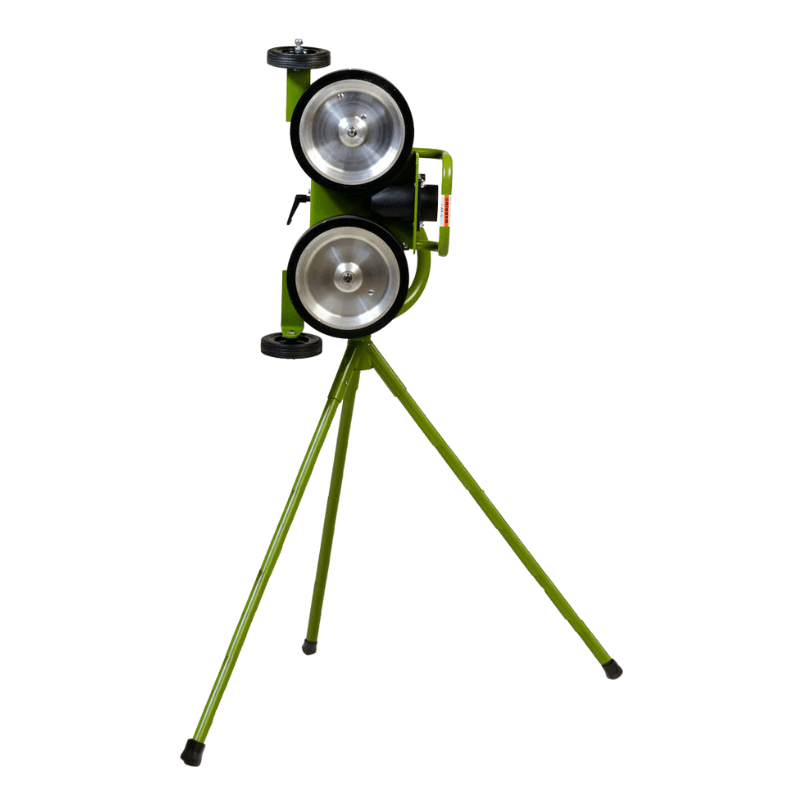
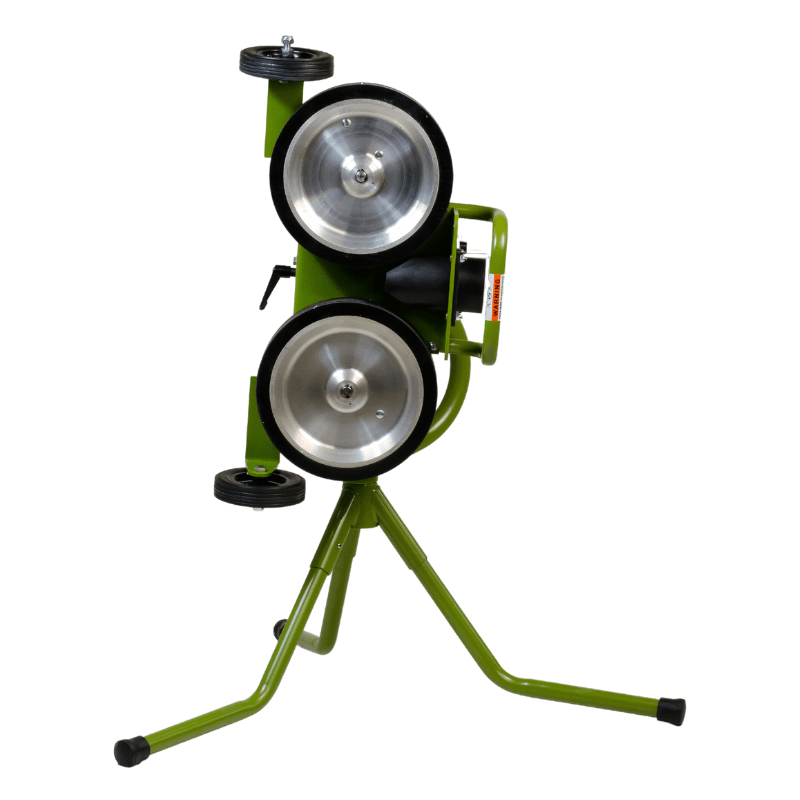
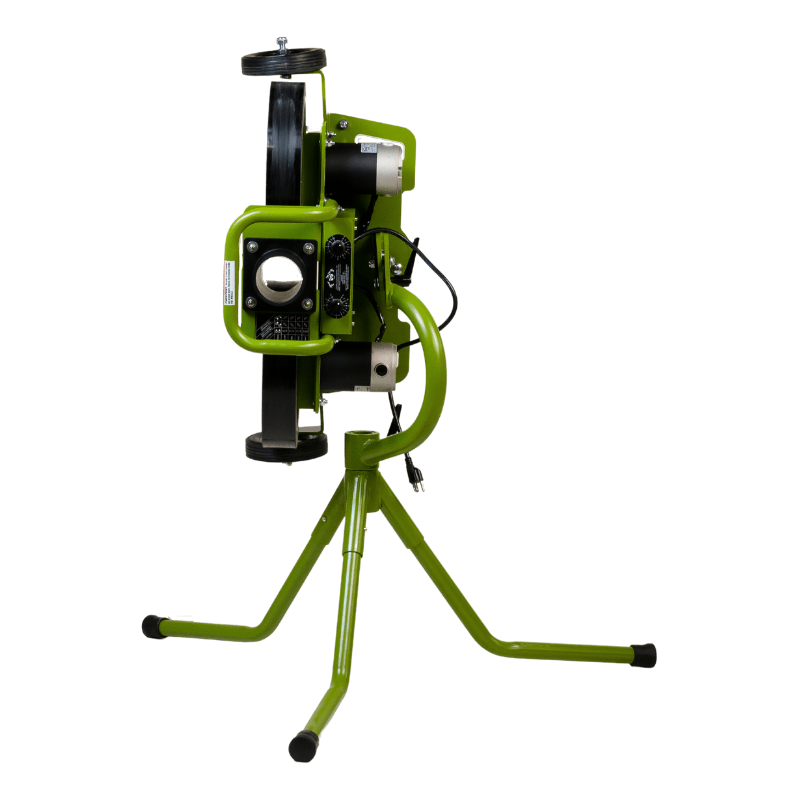
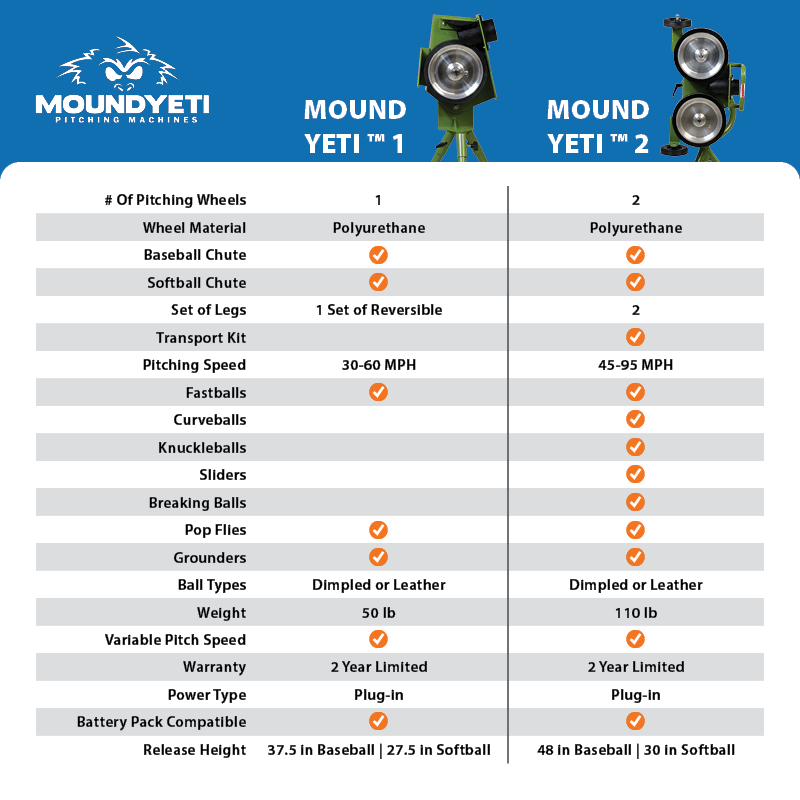
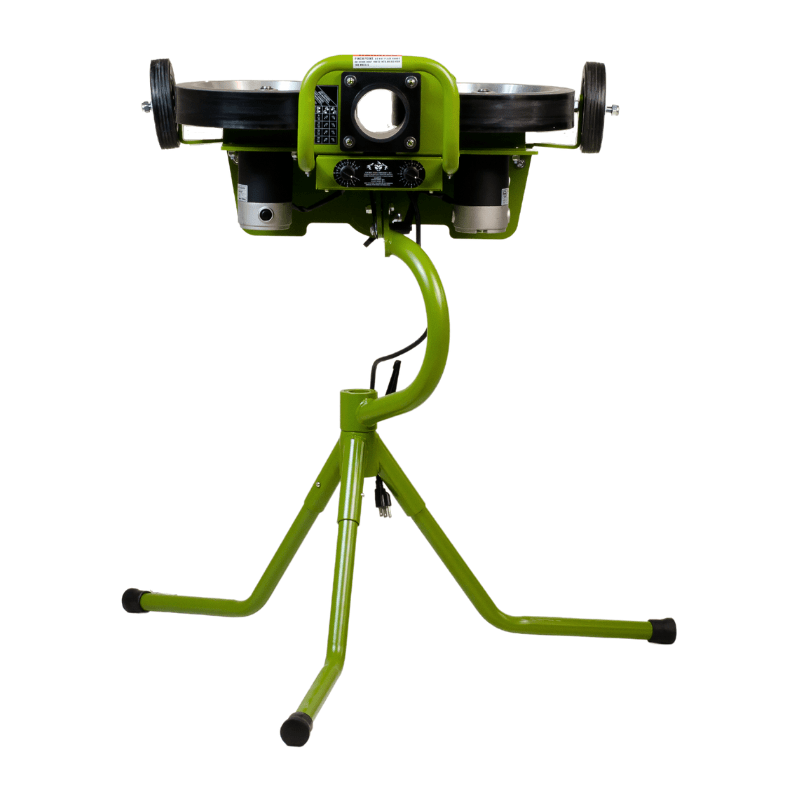
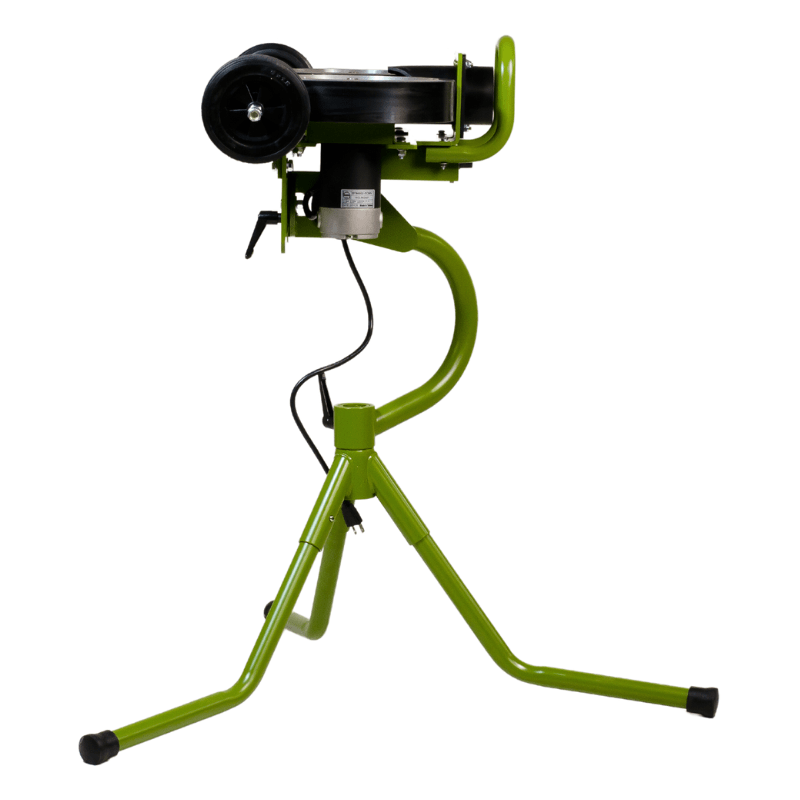
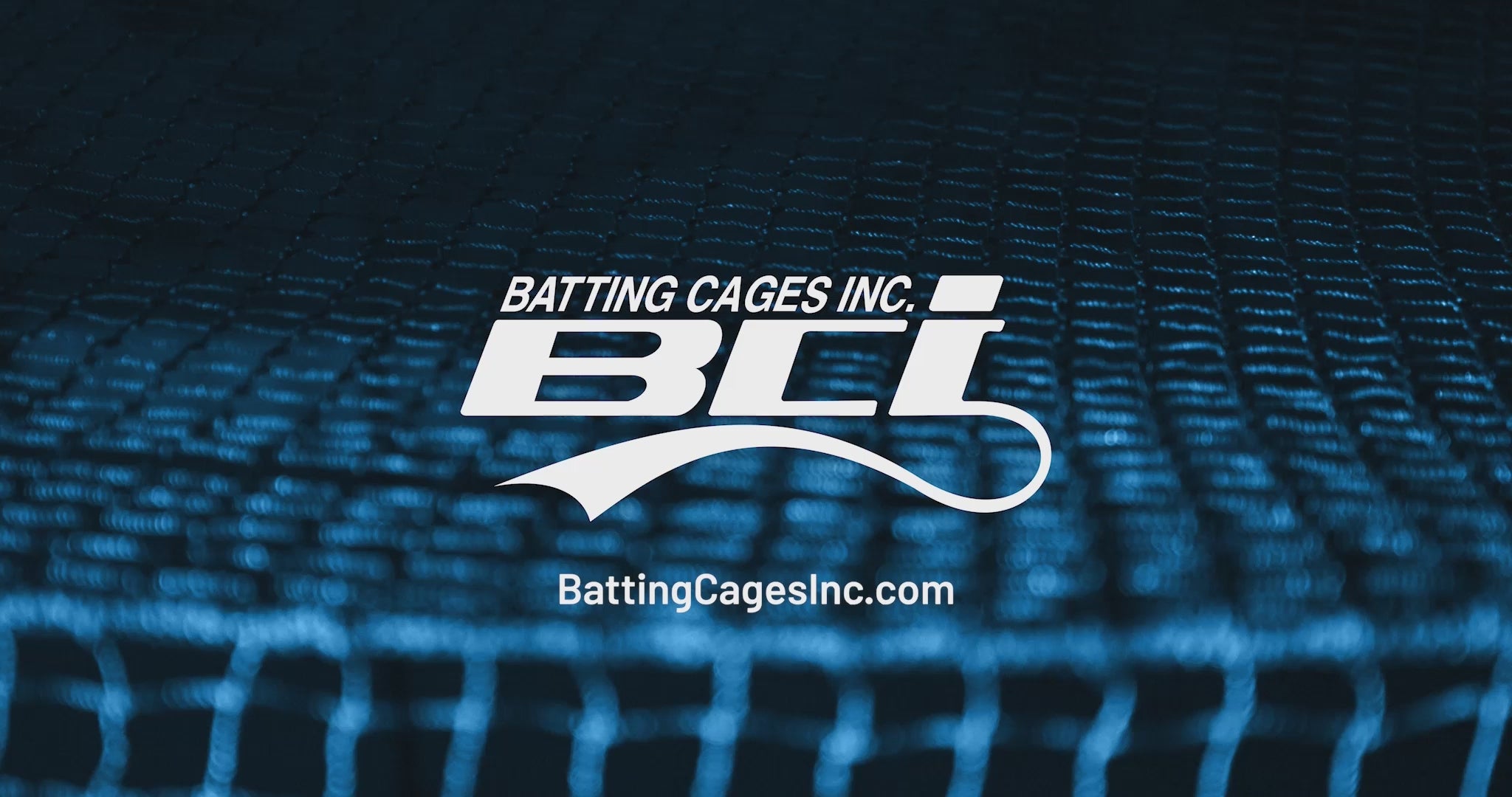
Mound Yeti™ 2 Pitching Machine
The Mound Yeti™ 2 Pitching Machine is one of the most versatile pitching machines on the market. This machine pitches both baseballs and softballs and includes a conversion kit. The conversion kit also includes a set of shorter legs, taller legs and two ball chutes to accommodate the size of baseballs and softballs. With pitch speeds ranging from 45 – 95mph, this works great for all skill levels. With a quick adjustment, this machine can throw left-handed breaking balls, right-handed breaking balls, fastballs, sliders, and knuckleballs. Speed settings can be set at low, medium, high, or crank it up to bring the heat! The Mound Yeti™ 2 can be used for more than just BP! Angle the head of the machine up for fly ball or down for grounders. The wheels are made from polyurethane. Dimpled balls are recommended for use. Use of leather balls can cause excessive wear on the wheel surface. The Mound Yeti™ 2 includes the conversion kit, transport kit, and a 2-year limited warranty (learn more).
Note: This machine is not compatible with the Bata Auto Feeder


